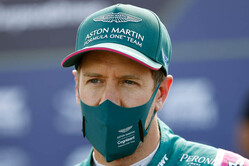


18/05/2021
NEWS STORY
 The Monaco Grand Prix is Formula One's blue-riband event. It's the most famous race in the world - and one of the toughest; winning here is invariably the domain of the sport's greats. Drivers put it all on the line around the tough streets of Monte-Carlo - finding the limit between brushing the wall and colliding with it is one of motorsport's greatest spectacles. From Saint Devote through Rascasse and beyond, few tracks test a driver's abilities like Monaco.
The Monaco Grand Prix is Formula One's blue-riband event. It's the most famous race in the world - and one of the toughest; winning here is invariably the domain of the sport's greats. Drivers put it all on the line around the tough streets of Monte-Carlo - finding the limit between brushing the wall and colliding with it is one of motorsport's greatest spectacles. From Saint Devote through Rascasse and beyond, few tracks test a driver's abilities like Monaco.
Lance: "It was a shame not to be able to race at Monaco last year, so I'm really excited we're returning this year. We know we need to keep pushing hard to find improvements, and that's exactly what we're doing. With such a tight battle in the midfield, anything can happen - especially at a place like this. If we execute our weekend strongly, we'll be aiming for the points."
Sebastian: "There's a long season ahead, and the new parts we ran in Barcelona felt like an improvement and are helping us to move forward. The goal is to build on that in Monte-Carlo. We know that our race pace has often been stronger than our single-lap pace, so we'll be focusing extra hard on that all-important qualifying performance this weekend. I'm excited for the challenge of Monaco - there's no other track like it."
There have been Monaco Grands Prix without a single overtake in the past - which makes strategy all the more important, as races can be won or lost on the pitwall. Our strategy engineers have analysed historic data and recent car performance to predict the key factors that could determine the result on Sunday, presented in partnership with our Title Partner Cognizant.
• Track position is crucial in Monaco because it's the toughest place on the calendar for overtaking - and by a significant margin. Qualifying is the key to a strong weekend, and the pitwall is kept busy by the possibility of making up places in the pitlane through strategy, so expect plenty of variance and undercuts as engineers look for tiny, marginal gains.
• Strategy opportunities are boosted by a pitlane time loss of just 20 seconds per stop, not to mention the feasibility of extended stints, despite Pirelli bringing its softest and least durable tyres, the C3, C4 and C5. In 2019, drivers managed to eke out tyre-life to around 50 laps (of 78) on a single step, so a one-stopper is the preferred option, with the undercut proving all the more powerful.
• Despite the lack of overtaking, the race can be turned on its head in an instant. It's the shortest race distance of the year - at 260km, compared to 305km for all other Grands Prix - but has the highest chance of a Safety Car (80%) or VSCs (25% of all races, since it was introduced), which means it regularly runs close to the two-hour maximum time-limit.
• It's just 210m from pole to Turn One (only Austria is shorter), offering limited opportunities to pass. The 2018 and 2019 races combined, excluding lap one and Safety Car restarts, had just six overtakes - all completed without DRS. The best place to try to make an overtake work is at the Turn 10 harbour chicane, where chasing cars are boosted by the long run through the Tunnel and hard braking into a tight left-hander.
A lap of...
Drivers blast down the kinked start/finish straight at speeds approaching 300km/h (186mph) before dropping down to around 100km/h (62mph) in third gear for the deceivingly tricky Saint Devote, a corner that has seen plenty of incidents across the years.
A good exit from Saint Devote is crucial for the climb up to Casino Square. Drivers hook seventh gear and approach at 280km/h (173mph) before braking for the sweeping Massenet bend. It's tricky to find the apex for this bumpy left-hander because the Armco juts out at irregular intervals, and it's easy to smack a wheel against the wall.
Taking in the iconic Casino Square backdrop, drivers brake lightly, maintaining speeds of 180km/h (111mph) before beginning the downhill run to Mirabeau, kinking right to avoid the big bump caused by a junction in the road. After a relatively high-speed first sector, the drivers reach the slowest corner on the Formula One calendar - the iconic hairpin, taken at just 50km/h (31mph).
The tight and slow-speed sector continues into Mirabeau Bas and Portier. Drivers accelerate from around 100km/h (62mph) as they head for the famous tunnel. The low-lit, flat-out right-hander means the charge to Turn 10 is effectively the longest 'straight' on the circuit.
Drivers emerge from darkness at 280km/h (174mph), struggling for rear traction as the car goes light under hard braking for the Nouvelle Chicane. It's a second-gear corner, taken at 70km/h (43mph), and is often the scene of wheel-banging drama as drivers attempt to slice up the inside.
The high-speed direction-changes of the Swimming Pool showcase the huge downforce of modern Formula One cars, as they rapidly switch left and right at over 240km/h (149mph). The final sector of the lap includes the slow-speed Rascasse hairpin - scene of the legendary nightspot - and a slow-speed right-left through the Antony Noghes corner as the drivers navigate back onto the start/finish straight.